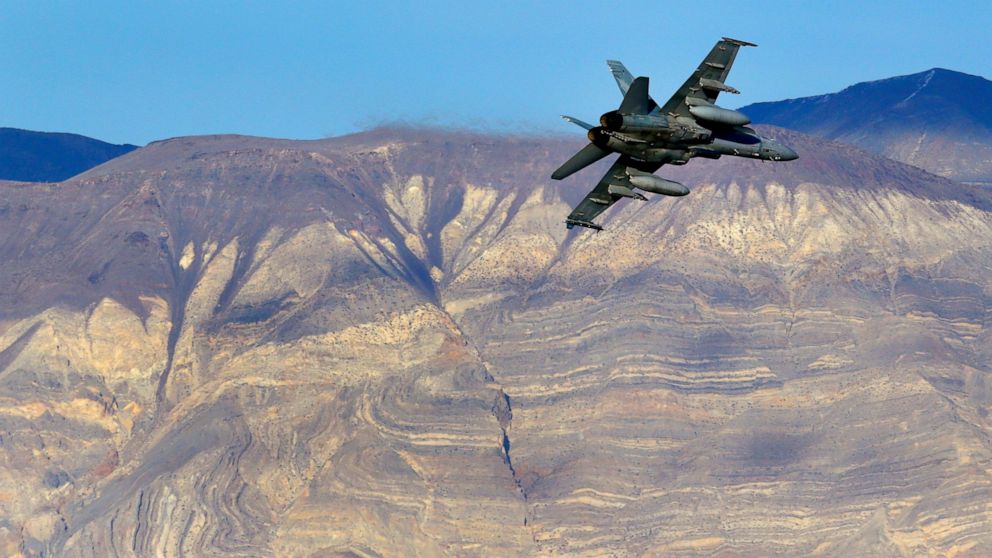
The pilot of a U.S. Navy jet fighter that crashed in Death Valley National Park was killed, the military said Thursday.
The identity of the pilot will be withheld until 24 hours after notification of next-of-kin in accordance with Defense Department policy, the Navy said in a statement.
The F/A-18E Super Hornet was assigned to Strike Fighter Squadron VFA-151 based at Naval Air Station Lemoore in California’s Central Valley. The unit goes by the nickname “Vigilantes.”
The jet went down Wednesday during low-level flying in what was described as routine training.
The crash injured seven people who were at a scenic overlook where aviation enthusiasts routinely watch military aircraft speeding low through a chasm dubbed “Star Wars Canyon.”
Park spokesman Patrick Taylor said minor injuries ranged from burns to cuts.
KABC-TV spoke to the group, a family of French tourists who said they were hit by flying fragments after the aircraft exploded.
The injured tourists told the news station they were taking photos of the sweeping landscape when the jet screamed into view and slammed into the canyon wall.
The crash sent dark smoke billowing in the air, said Aaron Cassell, who was working at his family’s Panamint Springs Resort about 10 miles (16 kilometers) away and was the first to report the crash to park dispatch.
“I just saw a black mushroom cloud go up,” Cassell told The Associated Press. “Typically you don’t see a mushroom cloud in the desert.”
Cassell’s father, Tim Cassell, who survived the crash of his own plane in remote wilderness five years ago, said he saw only small pieces of wreckage and no sign of a parachute or ejection pod.
“I wrecked my plane in the Sierra Nevada mountains and it banged me up pretty good and it was still in one piece,” Cassell said. “A plane destroyed to that extent, there’s no way anybody could have survived that.”
The lookout point about 160 miles (257 kilometers) north of Los Angeles is popular with photographers and aviation buffs who gawk at jets flying in the steep, narrow canyon. Officials closed the area after the crash.
U.S. and foreign militaries train pilots and test jets in the gorge officially called Rainbow Canyon near the park’s western entrance. Military flights there date back to World War II.
The chasm got its nickname because mineral-rich soil and red, gray and pink walls bring to mind the home planet of “Star Wars” character Luke Skywalker.
Training flights are almost a daily feature with jets thundering below the rim of the canyon.
Cassell said he heard jets roaring through the area and then saw the cloud of smoke.
“It looked like a bomb,” Cassell said. “To me that speaks of a very violent impact.”
A jet that was following the downed craft pulled up and began circling, Cassell said. He didn’t see any parachute.
His father drove up to the area after the crash and saw a large black scorch mark and shattered parts of the jet scattered throughout the area between the parking lot and lookout, Cassell said. A nose cone from the jet was the size of a bowling ball and the rest of the debris was no larger than a ball cap.
The Super Hornet is a twin-engine warplane designed to fly from either aircraft carriers or ground bases on both air-superiority and ground-attack missions.
———
Associated Press reporters Christopher Weber and John Antczak also contributed to this story.





